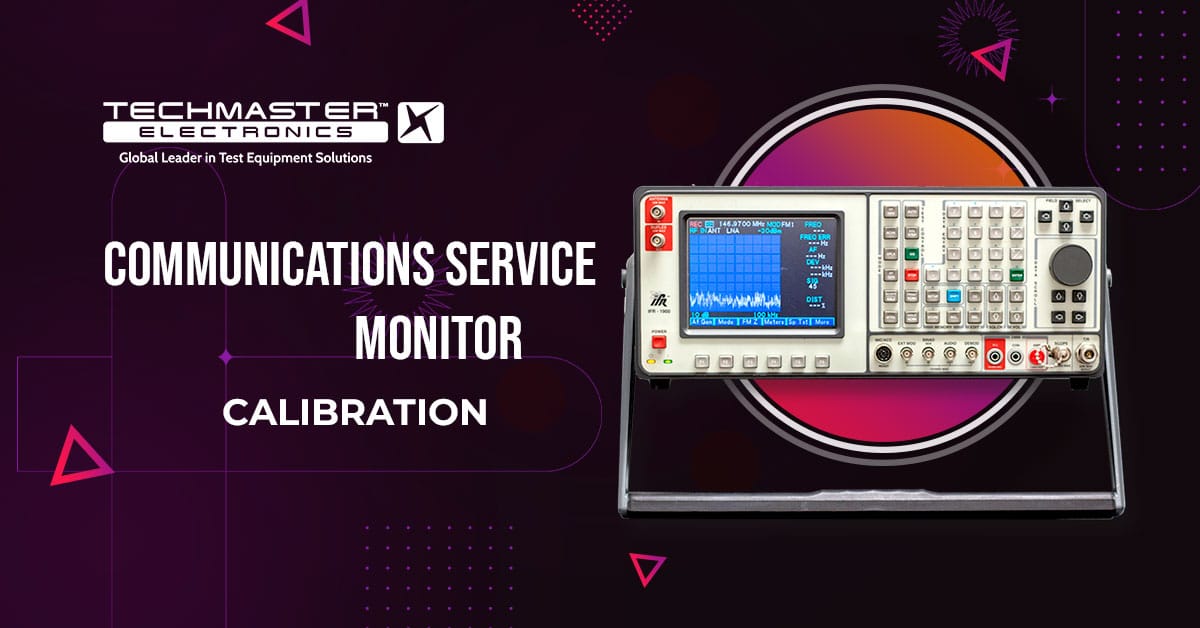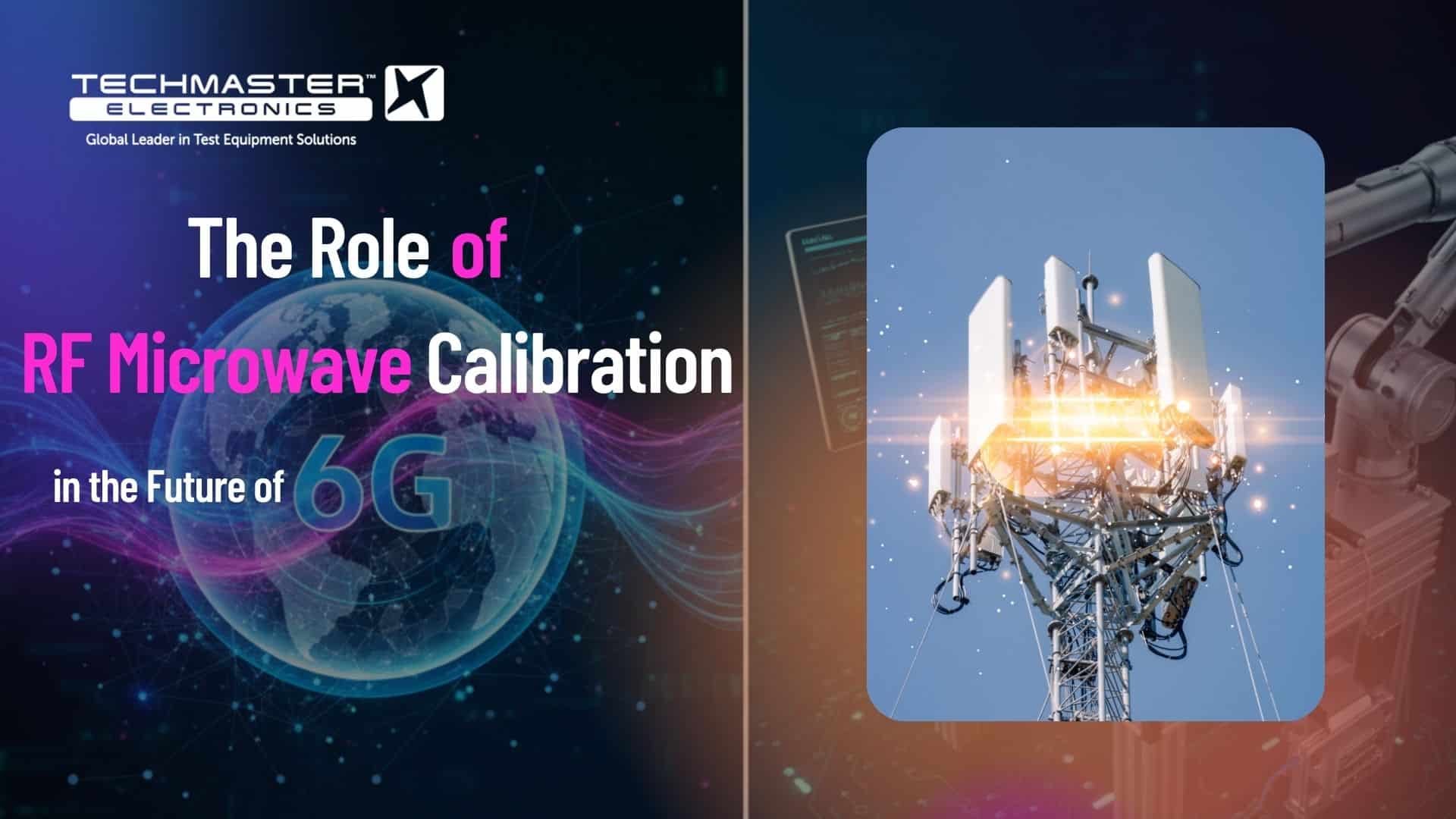In the world of RF and microwave systems, precision isn’t a luxury—it’s a necessity. That’s why Network Analyzer calibration is not just a checkbox item; it’s a critical process that determines the accuracy of every signal path, frequency sweep, and S-parameter you measure. Whether you’re in aerospace R&D or managing a telecom test lab, the stakes are high.
What Is a Network Analyzer and Where Is It Used?
To understand the value of calibration, it’s essential to first grasp what a Network Analyzer does. These instruments are not general-purpose tools—they are engineered for high-frequency signal analysis, often operating in environments where even minor errors can lead to mission failure or compliance violations.
Network Analyzers, especially Vector Network Analyzers (VNAs), are essential tools in high-frequency electronic testing. These instruments measure parameters like reflection (S11) and transmission (S21) to characterize RF components. There are various types:
-
Benchtop VNAs: High-performance instruments used in R&D and labs
-
Handheld VNAs: Field-serviceable tools for on-site diagnostics
-
Modular VNAs: Scalable instruments used in automated test systems
Common sectors using VNAs and spectrum analyzers include:
-
Aerospace & Defense: Satellite communication, radar systems
-
Telecom & 5G: Antenna testing, base station validation
-
Medical Devices: RF shielding and signal interference analysis
-
Semiconductor Manufacturing: Wafer-level test and packaging
![]()
Leading brands include Keysight, Rohde & Schwarz, Anritsu, and Copper Mountain.
Why Periodic Network Analyzer Calibration Is Non-Negotiable
Skipping calibration might seem harmless—until it’s not. Without regular Vector Network Analyzer calibration, you risk:
-
Audit failure due to non-compliance with AS9100, ISO 17025
-
Inaccurate test results affecting product quality or compliance
-
Costly delays in development cycles from undetected errors
-
Field failures that damage reputation and customer trust
In 5G testing, even a 0.2 dB measurement drift can invalidate an entire antenna array test.
How Network Analyzer Calibration Works (Simplified)
Professional Network Analyzer testing service typically follows these steps:
-
Pre-checks: Inspection of connectors, firmware, environmental conditions
-
Calibration Method: Using SOLT (Short-Open-Load-Thru) or TRL (Thru-Reflect-Line) with calibration kits
-
Measurement Validation: Comparing results to NIST-traceable standards
-
Certificate Issuance: With or without uncertainties, depending on service level
Many providers, including Techmaster, offer on-site network analyzer calibration to minimize downtime.
Need help planning calibration for your lab? Contact our RF team for a free consultation.

Global Standards That Back Your Results
Calibration isn’t just about adjusting settings—it’s about proving to customers, auditors, and regulators that your measurements are valid. Compliance with internationally recognized standards ensures that your lab’s data stands up to scrutiny, both technically and legally. It also reassures customers that quality and reliability are built into every stage of your workflow.
At Techmaster, all calibrations adhere to international standards:
-
ISO/IEC 17025 (2017): Accreditation ensures technical competence and traceability
-
ANSI/NCSL Z540.1: Required in U.S. aerospace and defense sectors
-
NIST Traceability: All measurements traceable to national metrology institutes
This triple-layer compliance guarantees credibility in audits and cross-border acceptability.
In-House vs. Professional Network Analyzer Calibration
Let’s break down the differences:
| Factor | In-House Calibration | Professional Calibration |
|---|---|---|
| Equipment Cost | High | Included in service |
| Technical Skill | Requires certified staff | Expert metrologists |
| Accuracy | Limited by internal references | ISO 17025-grade |
| Documentation | Often incomplete | Full certificate + uncertainties |
| Repair Support | Not available | Included (Techmaster) |
Unless you’re a large OEM lab, outsourcing is often the more practical and compliant choice.
How Often Should I Calibrate a Network Analyzer?
A general rule: calibrate every 6 to 12 months, depending on:
-
Frequency of use
-
Environmental conditions
-
Internal quality policies
-
Manufacturer recommendations
With Techmaster Portal, clients can track schedules, access certificates, and receive reminders—all in one place.
How to Choose a Calibration Provider for Your Network Analyzer
Choosing the right provider isn’t just about price. Look for:
-
ISO/IEC 17025 accreditation: Ensures traceability and audit readiness
-
Experience with your device: Familiarity with Keysight, Anritsu, R&S, etc.
-
Measurement capabilities: Can they calibrate up to your required GHz range?
-
Turnaround time: Fast service minimizes downtime
-
On-site services: Essential for minimizing logistics hassles
-
Documentation quality: Complete, digital, audit-ready certificates
A provider like Techmaster checks all the boxes, offering certified expertise and digital tools to streamline the process.

Understanding Network Analyzer Calibration Costs
Costs vary based on several factors:
-
Frequency range (e.g., up to 6 GHz vs. 50 GHz)
-
Calibration type: Commercial vs. ISO 17025-accredited
-
On-site vs. lab-based service
-
Additional requirements: Uncertainty analysis, custom reports, repair needs
While high-end calibration can seem costly upfront, it often saves more by:
-
Preventing failed audits
-
Reducing product recalls
-
Eliminating rework and downtime
Techmaster offers transparent quotes and bundled options to suit different operational needs.
Common Calibration Mistakes (And How to Avoid Them)
Even experienced teams can fall into common traps:
-
Using expired calibration kits: Results in skewed measurements
-
Skipping connector inspection: Dirt or damage causes impedance mismatch
-
Overlooking environmental conditions: Temperature & humidity impact measurements
-
Not tracking calibration schedules: Leads to audit risk and data invalidation
Avoid these pitfalls by working with a certified partner who provides proper documentation, reminders, and expert handling every time.
Quick Calibration Checklist Before Sending Your VNA
To ensure a smooth and accurate calibration process, here’s what to do before shipping or scheduling on-site service for your Vector Network Analyzer:
-
Inspect and clean connectors: Use lint-free swabs and isopropyl alcohol if needed.
-
Label any known issues: If there’s drift, noise, or display errors, tag it clearly.
-
Reset settings (if possible): Restore factory defaults to avoid custom configs interfering.
-
Backup firmware and settings: Just in case your team needs to restore them post-calibration.
-
Attach accessories: Include necessary cables, calibration kits, or adapters you want checked.
-
Document usage conditions: Operating environment and use frequency help calibrators tailor validation.
Following this checklist reduces turnaround time and helps you get the most value from your calibration service.

FAQs About Network Analyzer Calibration
1. How long does calibration take?
Standard turnaround is 3–5 business days. Expedited or on-site network analyzer calibration is available.
2. Which brands do you service?
We calibrate Keysight, Anritsu, R&S, and more—up to 50 GHz.
3. What is ISO 17025 Network Analyzer Calibration?
It means the calibration is done under ISO-accredited procedures, ensuring traceability and measurement uncertainty reporting.
4. Can you calibrate without sending the device?
Yes, our mobile lab offers on-site network analyzer calibration at your facility.
Example Scenario: Reducing Downtime in Aerospace RF Labs
In aerospace RF testing environments, inconsistent measurements often lead to extended troubleshooting, missed timelines, and increased compliance risk. By implementing regular ISO 17025-accredited Network Analyzer calibration, many labs report:
-
A significant reduction in troubleshooting time
-
Smoother audit outcomes with fewer non-conformities
-
Improved equipment uptime and test schedule adherence
While every organization is unique, this scenario reflects common improvements seen across the industry when working with experienced calibration providers.
Simplify Your Workflow with Techmaster Portal
The Techmaster Portal is your control tower for calibration:
-
Real-time tracking of asset schedules
-
Instant certificate downloads
-
Auto-reminders for next due dates
-
Centralized audit-ready documentation
Ready to Calibrate with Confidence?
Whether you’re managing a multi-site lab operation or just getting started with RF testing, calibration is the foundation of measurement integrity. Don’t wait until audits or product failures force your hand. Be proactive, build a culture of precision, and choose a calibration partner who aligns with your technical goals and compliance needs.
Don’t let uncertainty jeopardize your RF testing. Techmaster offers certified Network Analyzer calibration services with ISO 17025 certificates, on-site convenience, and unmatched customer support. Let’s build accuracy into your workflow—contact us today to get started.











